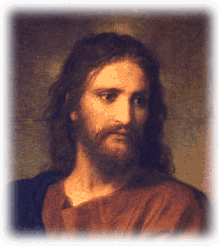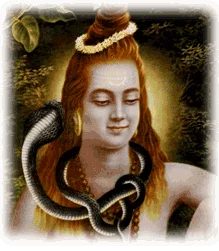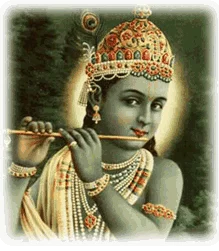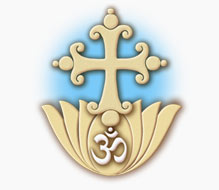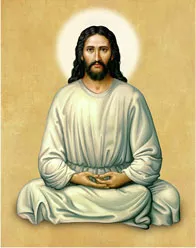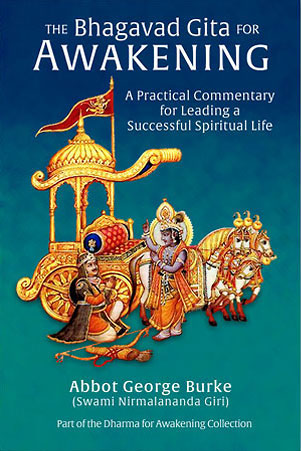
Those of us born in America were virtually baptized in the word Freedom. But freedom means many things, some of them specious in the case of dictatorial governments and individuals. Freedom has many levels. Some are satisfied with the freedom to buy whatever color or length of shoelace they want. Others with a freedom to do wrong that is not freedom at all but license. According to the development of the individual, so will be his concept of freedom and the kind of freedom he desires. Krishna speaks to those ready to graduate from earthly experience, saying:
He who is steadfast, having abandoned action’s fruit, attains lasting peace. He who is not steadfast, attached to action based on desire, is bound (5:12).
Those who have established themselves in yoga are immediately freed from the law of cause and effect, of action and reaction. Karma ceases to exist for them. They are not compelled to act by past karma, nor do their present actions produce any karma that would result in a future compulsion to action. This is true freedom. Acting in full awareness of Spirit, they have perfect peace. Although moving within this world, the center of their consciousness is in the transcendental realm of Inaction.
No matter how spiritually advanced someone may be, until the attainment of absolute liberation, until he is irrevocably established in the consciousness of Brahman and living ever in the state of Brahmanirvana, like everyone else caught in the net of Maya (Delusion), he is bound by actions prompted by desire, no matter how subtle or tenuous that bondage, action, or desire might be. But of the liberated-in-life, the jivanmukta, Krishna says:
Renouncing all actions with the mind, the embodied one sits happily as the ruler of the city of nine gates, not acting at all, nor causing action (5:13).
Centered in the truth of his Self, abiding happily within the nine-gated body, such a one may to outward appearance seem to be the most active of men.
The saints
Often we see that the saints accomplish much more than ordinary people. One of the few books Yogananda read in the West and which he recommended to his students, was The Saints That Moved the World. Not only that, their influence on others may last through centuries, maintaining and ever-increasing the works they began in their lifetime. This is only natural for, being one with God, they possess his creative powers and abundance. Consider the present-day “kingdoms” of Krishna, of Buddha, and of Jesus within the hearts of human beings.
We admire, even revere, many great men and women of our human history, but the majority of them are only memories. In contrast, the saints and masters are living presences; the very thought of them brings us into subtle contact with them, awakening our inner consciousness, inwardly drawing us toward the higher levels of existence in which they dwell. The mere sight of their forms produces a positive change in our consciousness–at least in the consciousness of those who are willing to be changed. Moreover, any action we do in response to their influence on us will not create karma for us. If we act in conformity with their teachings and as a result of their inspiration, that action will liberate rather than bind us.
The source of delusion
Now Krishna introduces a major topic: the source of delusion. It is interesting how psychopathic people can become when confronted with their folly and evil. They blame anyone and anything for their error. Everybody is a factor in the situation but them. In Genesis we see how Eve blamed the serpent and Adam blamed not only Eve but hinted that God was responsible (Genesis 3:9-13). “Why does God do this?… Why does God allow this?” is a common protest. Few are those who understand that they, and they alone, bear the responsibility for their actions and their reactions. But now in this fifth chapter of the Gita the liberating truth is being given to us.
The Lord does not create either means of action or action itself in this world, nor the union of action with its fruit. On the other hand, the swabhava impels one to action (5:14).
Prabhavananda’s interpretive translation says it quite well, even if not literally: “Do not say: ‘God gave us this delusion.’ You dream you are the doer, you dream that action is done, you dream that action bears fruit. It is your ignorance, it is the world’s delusion that gives you these dreams.” Saint James spoke of the same situation, saying: “Let no man say when he is tempted, I am tempted of God: for God cannot be tempted with evil, neither tempteth he any man: But every man is tempted, when he is drawn away of his own lust, and enticed. Then when lust hath conceived, it bringeth forth sin: and sin, when it is finished, bringeth forth death” (James 1:13-15).
The truly comforting part of Prabhavananda’s version is the word “dream.” All relative existence is a dream. We are co-dreamers with God. God dreams the cosmos, and we dream our involvement within it. No matter how horrendous or magnificent the dream may be, at the moment of awakening it will be revealed as nothing but ideas–creative ideas, but still just ideas. Only the two realities–God and the spirit–will remain. Blessed cessation, blessed peace and freedom. So when confronting the truth about delusion we need not be horrified or devastated by the fact that it comes from us. After all, even God dreams–why not us? God dreams rightly, but we dream wrongly. First we correct our dreaming, begin dreaming rightly along with God, and then we awaken. No more dream, no more delusion. Only Truth.
The primary focus of the Bhagavad Gita is Karma Yoga, the Yoga of Action. Yet Krishna tells us that the whole things is a dream, a product of ignorance. Even so, the dream is of importance, because through this dreaming we develop and expand our consciousness. The dream is not worthless and is certainly not evil or wrong. It is our loss of control and the resulting confusion and bondage that is wrong. The correct perspective on this is necessary for our controlling the dream and enabling ourselves to awaken from it.
If we ingest hallucinogenics we will have hallucinations. If we abstain, they will not occur. If we “ingest” the world and come to think we are part of it, we will only dream more and more, each dream becoming more distorted and misery-producing. When we draw back into our pure consciousness and begin to live in abstinence from the hallucinogenic of the world, we will begin to see through the veil into the Reality behind it. Eventually the veil melts away and we find ourselves face-to-face with the Real. Until then we are the source of the trouble.
Swabhava
This truth is expressed even more clearly by the inclusion of the word swabhava (self-nature), the real actor or mover in all this.
It is very comfortable for most translators to use the word “nature” with a capital N. They are children of Adam, throwing the blame on the creation, and therefore on the creator. The word swabhava does not mean prakriti, but the inherent disposition, nature, or potentiality of each one of us, our inherent state of mind, our state of inner being. An apple tree bears apples and a grapevine bears grapes. It is a matter of manifesting the inner nature, the swabhava of the plant.
Our entire life is a manifestation of our swabhava. This is unsettling if our life is unsatisfactory or overtly negative. We pity ourselves and enlist the sympathy of others, but it is our inner nature that is being revealed by the outer. You may not be able to judge a book by its cover, but you can certainly judge it by its contents. So it is with our life. That is its purpose: to reveal the character and quality of our inner condition through outward appearances. We should read the message and learn. Otherwise there is no alleviation from life to life. We are the problem and we are the solution.
Since our swabhava is the root of the dilemma, Patanjali says that a necessary practice for the yogi is swadhyaya–self-study, self-analysis. Only if we come to know the truth about our inner nature will we be able to intelligently work on it. We must first know the facts about our false self before we can uncover and know our true Self.
Divine indifference
It is embarrassing and painful to see and acknowledge our faults and wrongs, but Krishna helps us in that department, also.
The Omnipresent takes note of neither demerit nor merit. Knowledge is enveloped by ignorance; as a result of that people are deluded (5:15).
Obviously a perfect being cannot be shaken from his perfect equilibrium. Just as a human being could hardly be upset or angered at the action of an ant many feet down in the earth, neither can God be affected by the deeds of anyone. After all, God has manifested this universe for the purpose of our acting therein and learning the way of right action and to freedom from action. Consequently, whatever we do is for our interest only. As Krishna will say later in the Gita: “I am the same to all beings. There is none disliked or dear to me” (9:29)
It is we who must become concerned over the question of sin and virtue–and for the right reason: liberation. What has God to do with it? What is our dream to him? We are dreaming because the Light that is our Self is covered by our ignorance in the form of a self-perpetuating dream. The wise know that human beings choose to be either self-deluded or self-illumined.
The end of darkness/ignorance
But those in whom this ignorance of the Self has been destroyed by knowledge–that knowledge of theirs, like the sun, reveals the Supreme Brahman (5:16).
The Self and Brahman being one, when the Self is revealed so also is Brahman revealed–not outside us as an object, but from within us as the Source of our very existence. To find God, then, we must look within. As Saint Nectarios of Aegina, a twentieth-century Greek Orthodox saint, said: “If you cannot find God in your heart you will never find him.” As Krishna continues:
Those whose minds are absorbed in That, whose Selves are fixed on That, whose foundation is That, who hold That as the highest object, whose evils have been shaken off by knowledge, attain the ending of rebirth (5:17).
Read the next article in the Bhagavad Gita for Awakening: The Brahman-Knower

